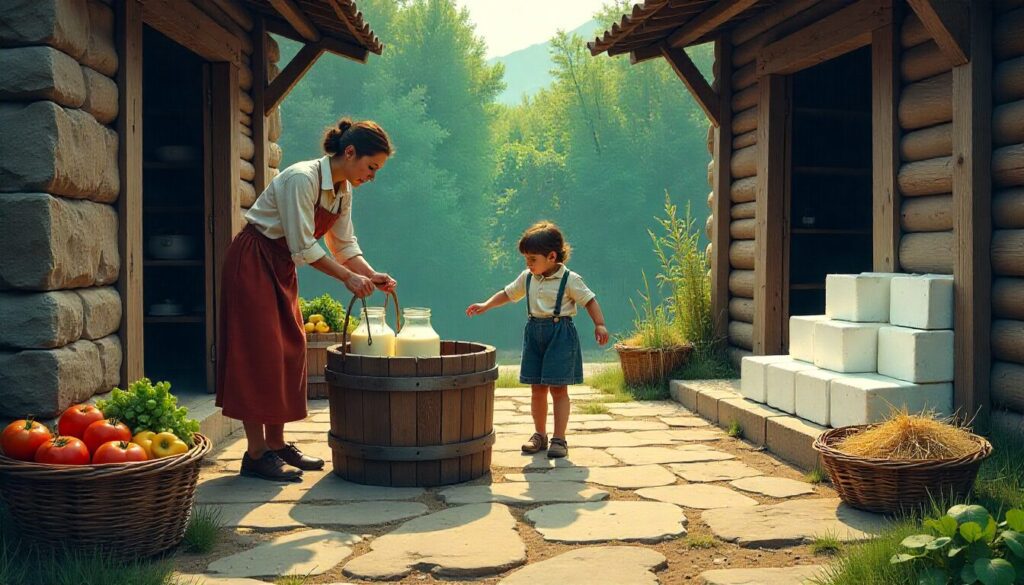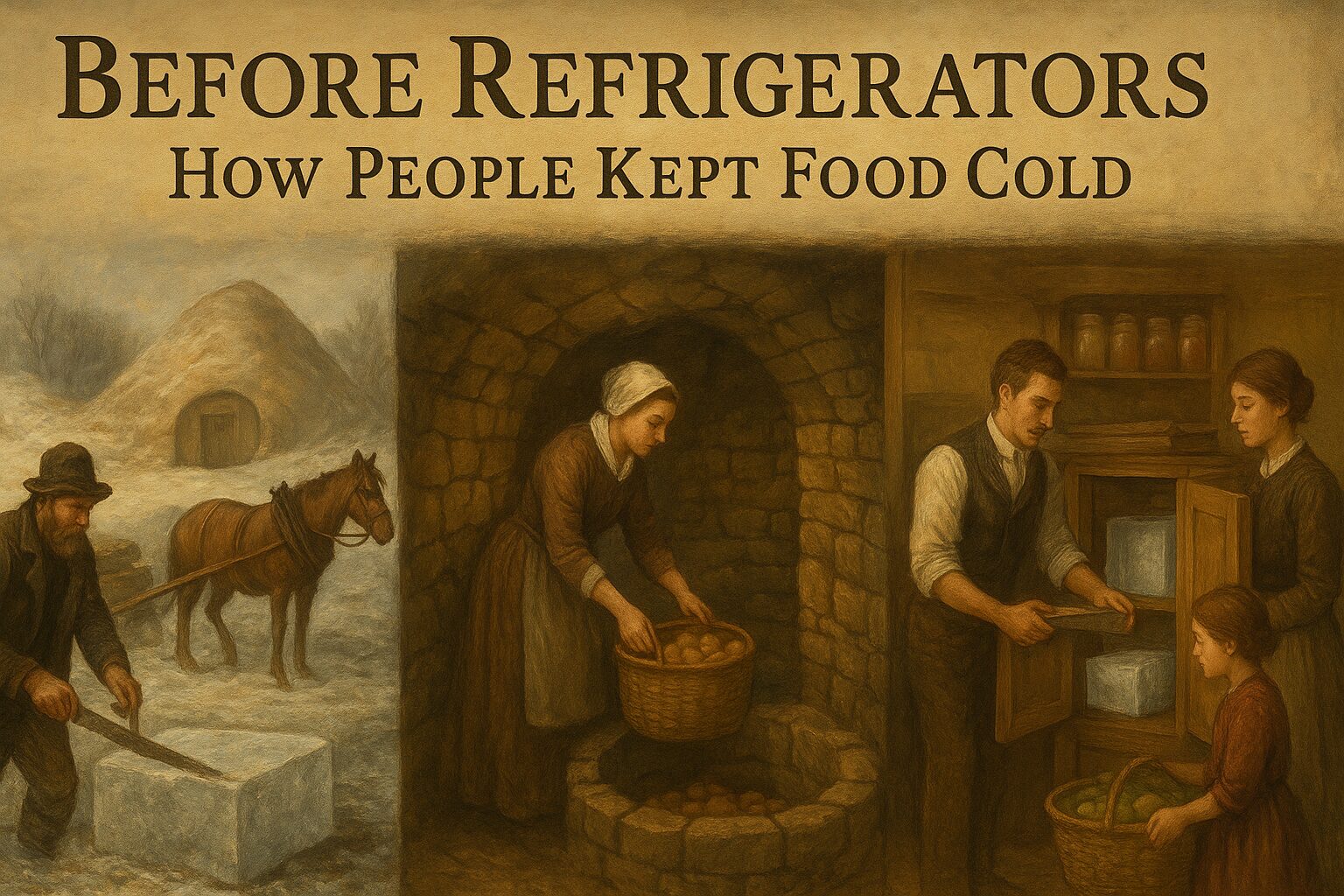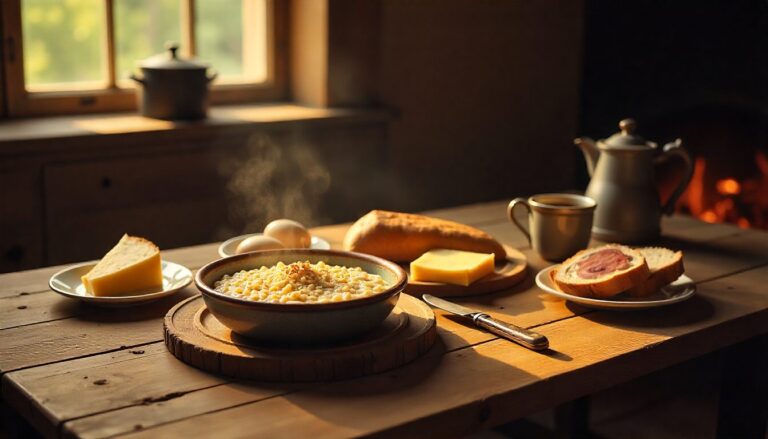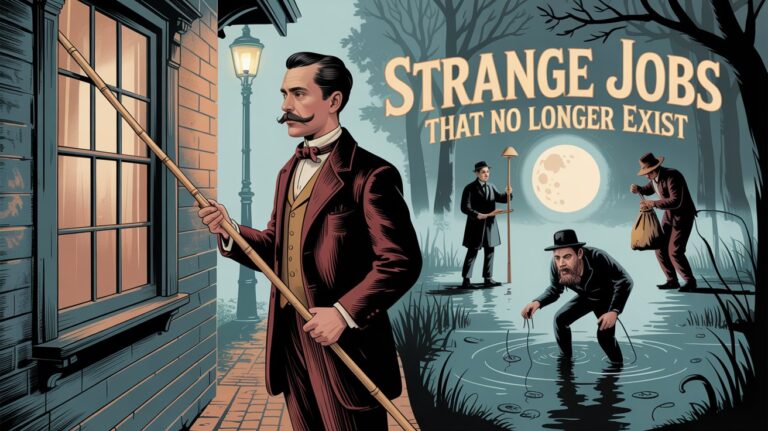Imagine this: You’ve just come back from the market with a basket full of fresh milk, meat, butter, and vegetables… but there’s no fridge waiting in your kitchen. No humming freezer in the corner. No cold drinks ready to grab. And it’s the peak of summer. How do you stop everything from spoiling?
For thousands of years, that was a daily problem for every household. Without the convenience of refrigeration, people had to get creative. They built structures, harvested ice, dug underground rooms, and even used natural weather conditions to keep food fresh. Some of their solutions were surprisingly effective—and a few of them are still used today.
Let’s take a trip through history to see exactly how people kept food cold before refrigerators.
The Earliest Cold-Storage Tricks
Long before electricity or even gas-powered coolers, people relied on nature’s own cooling systems.
Ancient China (around 1,000 BCE) – Wealthy households stored ice in underground cellars. The ice was collected during winter and insulated with straw or sawdust to last into the warmer months. Special ice houses, often reserved for royalty and nobility, kept drinks and certain foods cold.
Persian Yakhchals – In the deserts of Persia, ancient engineers built dome-shaped structures called yakhchals. These massive clay and mud-brick constructions had thick walls that kept the inside cool, storing ice brought from nearby mountains or collected in winter.
Ancient Greeks and Romans – They dug deep pits lined with straw or reeds, filling them with snow during the colder months. In Rome, the wealthy could enjoy chilled wine or preserved fruits thanks to these underground coolers.
For most common people, the reality was different. They had to consume fresh food quickly or preserve it using other techniques like drying, salting, fermenting, or smoking.
Ice Houses and Ice Harvesting
By the 1700s and 1800s, ice became a valuable commodity. In regions with cold winters, a new industry was born: ice harvesting.
During the coldest months, workers sawed massive blocks of ice from frozen lakes and rivers. This was backbreaking work, done with hand tools in bitter cold conditions. The ice blocks, often weighing hundreds of pounds, were hauled by horse-drawn sleds to storage facilities called ice houses.
Ice houses were large, insulated buildings with thick walls, often built partly underground to maintain a low temperature. The ice was stacked carefully and packed in sawdust or straw to slow melting.
When summer came, this stored ice was sold to households, hotels, restaurants, and businesses. In cities, “ice men” became a common sight—delivering blocks of ice right to people’s doors.
At home, families used iceboxes—wooden cabinets lined with tin or zinc and insulated with cork, sawdust, or seaweed. A block of ice would be placed in a special compartment, and the cold air would circulate around the stored food, keeping milk, butter, meat, and fish fresh for several days.
Cold Pantries and Cellars
Not every household could afford regular ice deliveries. In rural areas and warmer climates, families often relied on cold storage rooms designed to keep food fresh without ice.
Root cellars – Dug into the ground, these underground rooms used the earth’s natural insulation to maintain a steady, cool temperature year-round. Root vegetables like potatoes, carrots, and onions could last for months. Apples, cabbages, and even homemade preserves were also stored here.

Cold pantries – In Victorian houses, a cold pantry (sometimes called a larder) was placed on the north side of the home to avoid direct sunlight. The room often had ventilation ducts to let cool air in and warm air out. Shelves were made from marble or slate, which stayed cooler than wood.
These spaces weren’t as cold as iceboxes, but they slowed food spoilage enough to stretch supplies—especially important in eras when shopping trips were infrequent.
The Big Shift: From Ice to Electric
The early 20th century brought the biggest change in food storage history. By the 1910s, inventors were experimenting with electric refrigeration.
At first, these appliances were bulky, expensive, and mostly found in restaurants, hotels, or wealthy households. But by the 1930s, manufacturing improvements and falling prices made refrigerators more accessible.
Once the electric refrigerator entered the average home, the ice delivery business quickly declined. Iceboxes disappeared from kitchens, and storing perishable food became effortless. No more daily worry about melting ice or spoiled milk—it was a new era of convenience.
How We View It Today
Modern refrigeration is so common that most of us rarely think about it—until the power goes out. Yet, in certain communities, old-fashioned methods are still alive and well.
Homesteaders, off-grid households, and eco-conscious families sometimes build root cellars or use evaporative coolers to reduce energy consumption. In Arctic and sub-Arctic regions, people still store food in outdoor ice cellars dug into the permafrost.
Ironically, some people today are rediscovering these age-old techniques as part of a more sustainable lifestyle.
Frequently Asked Questions (FAQs)
How did people preserve their food if there were no refrigerators?
They used salting, smoking, drying, fermenting, pickling, and natural cold storage in cellars or ice houses to extend the life of food.
How did they keep stuff cold in the 1800s?
Most people used iceboxes stocked with harvested ice or relied on root cellars and cold pantries to slow spoilage.
How did medieval people keep food cold?
They used stone-built cellars, underground pits, and, for the wealthy, snow-packed containers or ice imported from colder regions.
How did people store milk before refrigeration?
Milk was stored in cool, shaded cellars, placed in covered containers submerged in wells, or kept in cold running water.
How was ice cream stored before refrigeration?
It was sealed in containers surrounded by a mix of ice and salt inside insulated boxes, which kept it frozen long enough to serve.
Why do Europeans not refrigerate their milk?
Many European countries pasteurize milk at ultra-high temperatures (UHT), making it safe to store at room temperature until opened.
How did people live without fridges?
They bought smaller quantities of food, ate it quickly, preserved it using traditional methods, and relied on natural cooling techniques.
Which country invented ice cream first?
China is credited with the earliest form of ice cream, though variations of frozen desserts appeared independently in several cultures.
How to keep ice cream frozen for 3 hours without a fridge?
Wrap it in several layers, place it inside an insulated cooler with plenty of ice or dry ice, and avoid opening the container until serving.
Final Thought:
Before the invention of the refrigerator, keeping food cold was a constant challenge. People had to work with the seasons, the land, and a lot of ingenuity. From hauling giant blocks of ice to building underground storage rooms, every solution tells a story of survival and resourcefulness.
Next time you grab a cold drink or a tub of ice cream from your fridge, remember—you’re enjoying the result of centuries of innovation. Our ancestors might not have had modern appliances, but they knew exactly how to keep things cool.




